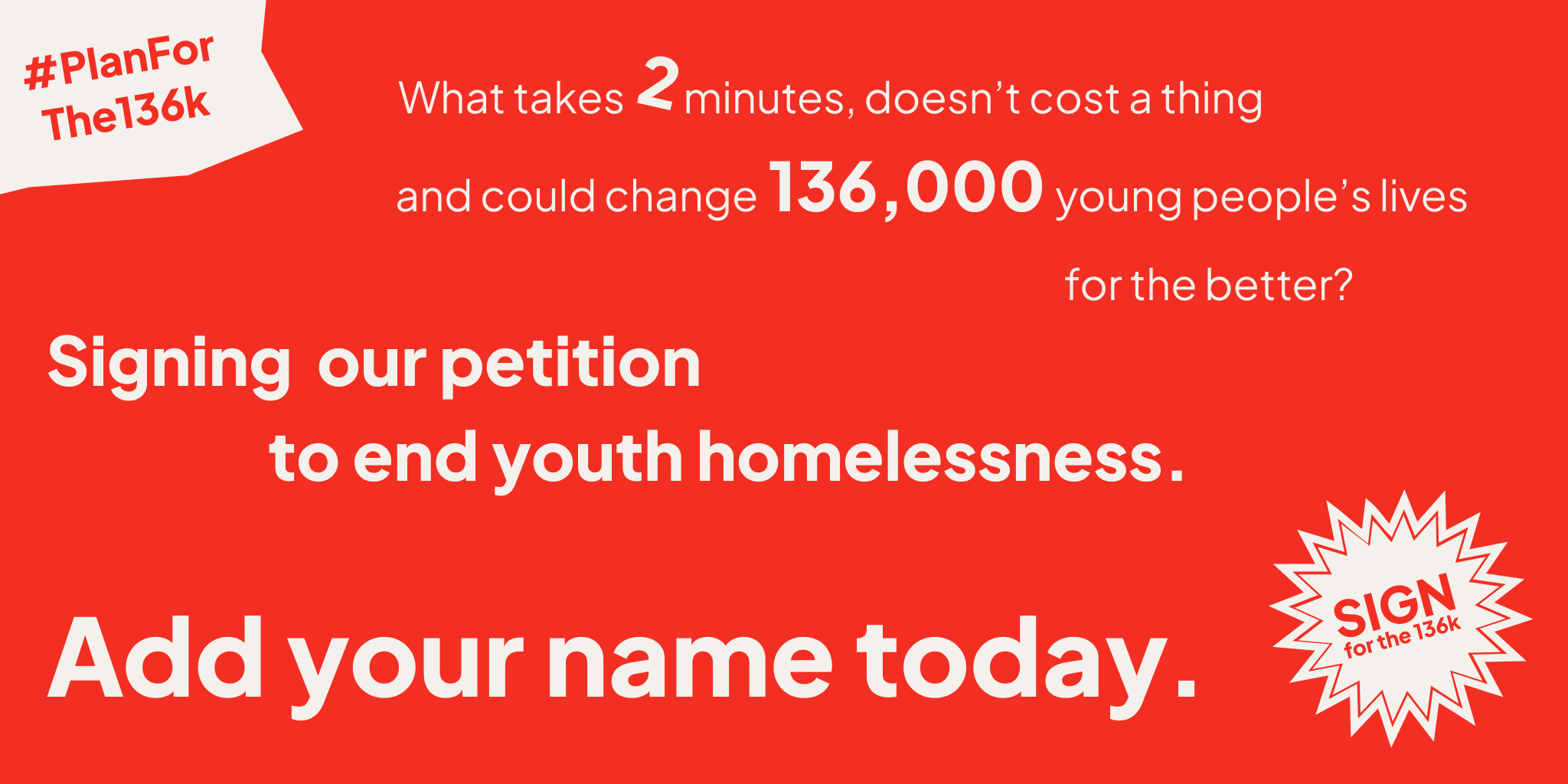“This is the worst winter we’ve ever faced” – 120 Charities raise alarm on spiralling youth homelessness crisis
136,000 young people faced homelessness last year, but experts say the true number could be as high as double that figure.
Politicians, charities and celebrities have united over a government petition calling for a national youth homelessness strategy, as employers, charities and public sector organisations meet in Manchester to discuss preventative measures.
HOMELESSNESS is a direct outcome of the systems that are meant to protect us all failing. But young people are often not part of the conversations when we talk about homelessness, despite making up a significant number of those in crisis. Young people are often invisible to authorities and services, more likely to be ‘hidden homeless,’ sleeping on a friend’s sofa or alternating between different short-term, unsuitable accommodation. This isn’t an unsolvable problem. A collective of over 100 charities and youth organisations – including Greater Manchester Mayor’s Charity and Greater Manchester Better Outcomes Partnership – who are sharing positive, evidence-based solutions that could sustainably solve homelessness for the young people they and their partners work with every day.
According to recent Centrepoint research the number of young people approaching their council as homeless or about to become homeless has risen to 135,800 for 2022-23. This equates to 372 per day, and a new young person facing the harm of homelessness every four minutes. The highest number of those young people – outside of London – are found in the North West.
In a nation struggling with a housing crisis, young people’s experiences are often ignored. There simply isn’t enough suitable, affordable and youth-appropriate housing. Young people are the most likely to be in low paid, insecure roles, and have the lowest savings and financial support. And with no ready guarantor to secure rental housing if family relationships have broken down, young people can be left with no options, and at serious risk of exploitation. This picture is only exacerbated for young people of minoritised communities.
This is the backdrop against which employers, public sector organisations and charities came together to discuss one mechanism to support young people at risk of homelessness, and help those experiences homelessness back onto a more stable footing: work.
In the latest of a series of policy roundtables hosted by Greater Manchester Mayor’s Charity, this group came together to explore the GROW model championed by Shelter, a traineeship programme specifically targeting people – of all ages – with lived experience of homelessness and rough sleeping. Though applicable to all ages, the conversation emphasised the experiences of young people given the startling new statistics on the extent of homelessness in that age group. Partnership working in Greater Manchester gives the opportunity to support everyone at risk of or experiencing homelessness, including young people in critical stages of their life-course.
Key contributions included a GROW trainee and GROW engagement officer, Greater Manchester Better Outcomes Partnership, and key employers with construction, transport and the NHS across the city region.
“Youth homelessness is on the rise. In Greater Manchester, we possess the understanding and expertise needed for intervention. Access to employment and skills opportunities stands as a crucial means to prevent homelessness among young people. However, we often lack the necessary resources or pathways into employers. The discussion, spanning from the GROW model to the coaching we provide at GMBOP and the importance of apprenticeships, was eye-opening. Numerous individuals and organizations are already making significant contributions and are eager to do more. By working collaboratively, we can create additional opportunities. Holding this discussion while we champion the campaign for a plan to end youth homelessness could not be more timely.”
“Homelessness is not inevitable. We can intervene, we can prevent, and we can make sure that for anyone who does experience homelessness, it is rare, brief and none-recurrent. But no organisation can do that alone. The appetite and energy to do more in the room was tangible. The outcome of that conversation has not only been some powerful connections to push forward new opportunities for people of all ages experiencing homelessness to get into more stable work, but a reiteration of the incredible partnership working that we are so proud of in Greater Manchester. Holding this event as we call for 136,000 people to sign the petition to get youth homelessness firmly on the government agenda gives us hope this is possible.”
These stark numbers come as the Government reaffirms its election commitment to end rough sleeping by 2025. Thanks to efforts from homelessness campaigners, last year’s updated Rough Sleeping Strategy included a greater focus on young people as a recognised and growing group that need youth-specific solutions. But over a year on, these new statistics serve to remind us that the promises are yet to be realised. It is especially frustrating given the Government's own admission that 54% of all rough sleepers first did so before the age of 25[1]. We therefore know that one of the single best ways to end rough sleeping is to stop young people ever needing to sleep rough.
That is one of the many reasons why a collective of over 100 youth and youth homelessness charities have united to call on the government to adopt and implement a national strategy to end youth homelessness. The strategy prioritises three key areas; prevention, finances and housing and lays out specific updates and evidence based solutions that the government should support in order to tackle the crisis.
[1]https://assets.publishing.service.gov.uk/government/uploads/system/uploads/attachment_data/file/1102005/Housing_First_Evaluation_Third_process_report.pdf
See https://centrepoint.org.uk/ending-youth-homelessness/what-youth-homelessness/stats-and-facts for more information.



